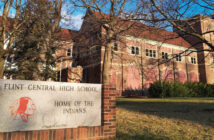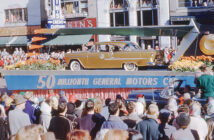As history continues to grow with the times, there are certain little side stories, certain tiny ideas that stick in the collective mind of the populace. These stories are handed down from person to person through generations until they achieve the status of legend or myth. Greater Flint has more than its share of these “little side stories” that give our area a local and unique flavor.
MCM has compiled ten Greater Flint Legends (in no particular order).
#1 Keith Moon Wrecked the Flint Holiday Inn

In 1967, British rockers The Who played a series of concerts performing as an opener for Herman’s Hermits. Their album “My Generation” was released two years earlier, but they had yet to reach stardom and their infamy for property destruction had not yet become part of their mythos. That changed when they came to Flint. After playing a show at Atwood Stadium, the band threw a birthday party for drummer, Keith Moon, at Flint’s Holiday Inn then located on Bristol Road (now Airport Inn). As the legend goes, the party erupted in all manner of drunken debauchery. Some highlights: fire extinguishers were emptied, a toilet exploded, Moon dumped a three-tiered cake on partygoers and a large food fight ensued, at which point Moon lost his clothes. Cops eventually arrived (as the legend goes) and Moon attempted to flee the scene. Wearing only a shirt, he jumped into a parked Lincoln Continental, released the handbrake and rolled the car backward into the hotel pool. After he emerged, he again ran from the police only to slip on some marzipan, fall and break a tooth. After being escorted by police to a dentist, he spent the night in jail and then rejoined The Who’s concert tour the next day via private jet. The Holiday Inn party is said to have caused $24,000 in damage (approx. $132,000 today), a change in hotel design (no more pools near parking lots), increased insurance premiums for touring bands … and The Who was banned for life from performing in Flint.
The Truth
The above account was provided by Keith Moon himself in a 1972
Rolling Stone interview; however, much of the tale was embellished. According to the Flint Holiday Inn manager on duty that night, Moon was never naked, the police were never there and a car never rolled into the hotel pool. Guests did throw chairs and music equipment into the pool, however. The cost of the destruction was a little less – $15,000 – for which the hotel was never reimbursed. The rest of the above story is confirmed.
#2 John Todd’s Pet Bear

In 1831, Frenchman Alexis De Tocqueville journeyed through the new world on a tour that would become the basis of his book, Democracy in America. In July, he was traveling with companions through the town of Grumlaw (Grand Blanc) on his way north to Flint. Voyaging through darkness, the group became lost and happened upon a collection of three cabins along the Flint River. They approached the home of John Todd, where they realized that Flint residents are a little tougher breed. “Soon the barking of dogs echoed through the wood, and we found ourselves opposite a log house and only separated from it by a fence,” De Tocqueville wrote. “Just as we were getting ready to get over it, the moon revealed a great black bear on the other side, which, standing upright and dragging its chain, made as clear as it could its intention of giving us a fraternal welcome. ‘What a devil of a country is this,’ I said, ‘where one has bears for watchdogs?’” Welcome to Flint, Alexis.
The Truth
The above passage was written by Alexis De Tocqueville in his book Democracy in America, and there is no reason to believe it false. Greater Flint holds a much heartier breed of citizen than most and John Todd was one of Flint’s founders and a man who had tamed the wilds of the area, so why not a pet bear? The Mott Community College mascot fits perfectly now.
#3 “Crack the Whip”
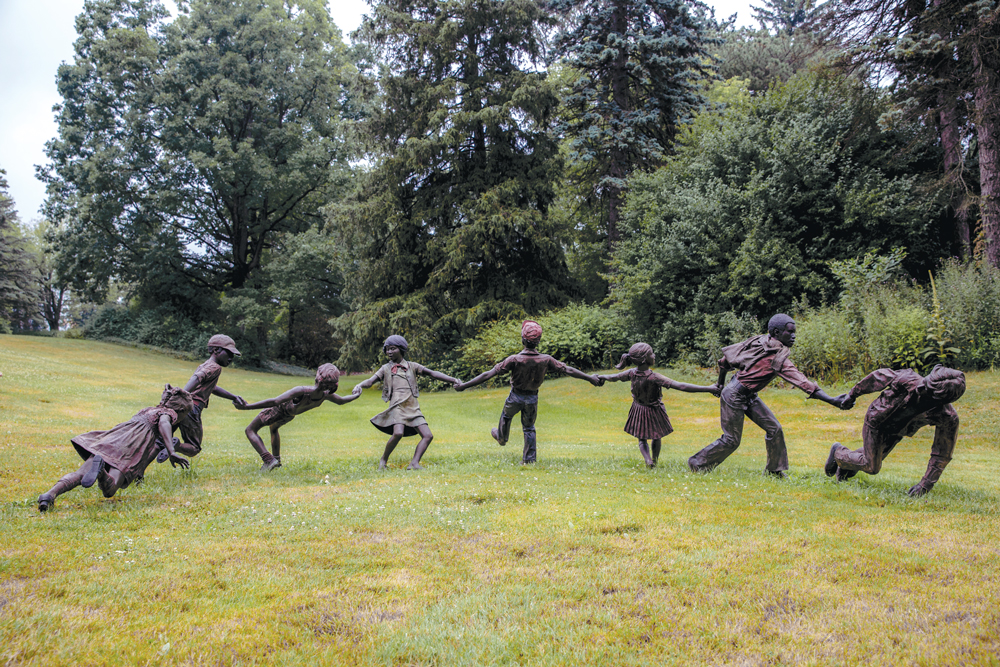
Welcome to Sunset Hills Cemetery, where the lawns are green and the shade is plentiful. This Flushing Road site is most notable for its statues and one in particular has spawned a scary legend that has some folks terrified to enter the grounds. The “Crack the Whip” sculpture depicts a string of children pulling each other along playing the rather dangerous game. Their faces look more frightened than gleeful, especially the last little girl being pulled off the ground leaving behind a lone sandal. Sculpted by artist J. Seward Johnson Jr., the statue was placed in 1983. As the legend goes, it was created in homage to a group of kids who were playing the game when the young girl at the end of the string was thrown into oncoming car traffic and killed. The girl’s grandfather donated the sculpture in her memory. Another part of the legend states that if you put your foot in the lost sandal of the statue, you will soon perish. Another version states that if you put your foot in the sandal at midnight, the statues will come to life.
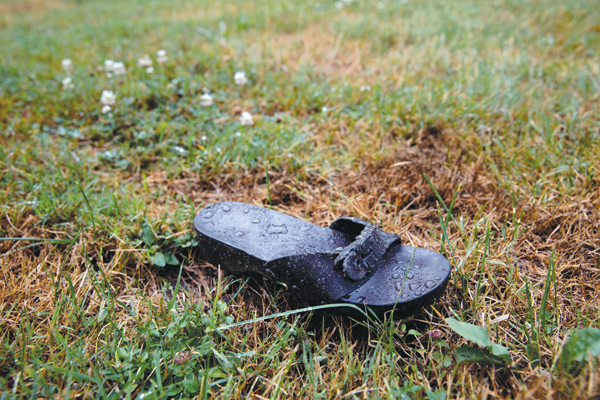 The Truth
The Truth
The legend is false. In 1980, the Sunset Hills Cemetery came across a version of the statue and thought it would be a nice addition to the collection and ordered a cast made in 1983. The girl pulled off her feet at the end of the “whip” is based upon the artist’s daughter who never met a tragic death. As far as the “step into the sandal” part of the legend … anyone want to give it a shot?
#4 The Lost Artifacts
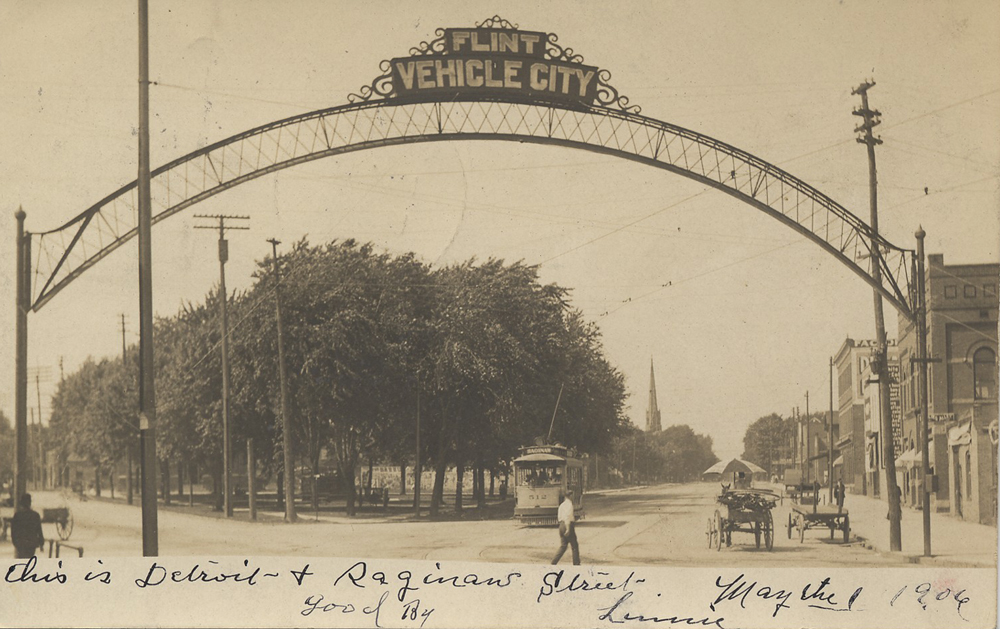
In 1899, in order to better illuminate the Downtown business district, seven arches were erected across Saginaw Street. The arches worked beautifully and in 1905, two more were added, each bearing the famous “Vehicle City” crown. As the automobile industry grew throughout the nation, it became important to organize all crossroads and intersections. So, in 1919, the original Flint arches were removed to make way for traffic lights and then disappeared from public consciousness. When the current arches were erected in the early 2000s, the fate of the originals was questioned. Where did they go?
In 1954, GM produced its 50 millionth car, a gold-plated Chevy Bel Air Sport Coupe. The car was debuted in a parade down Saginaw St. to a crowd of over 200,000. The one-of-a-kind vehicle was paraded around the United States as a marketing tool. When its tour ended, the Chevy passed to the hands of a private dealer, later to fade away into history.
The Truth
The original Flint arches supposedly met their fate during WW2 when they were found in storage and melted down for metal. The gold-plated Chevy, however, has been found (sans its gold exterior) in a garage in Columbus, OH waiting to be restored. In 2002, GM contacted the owner and offered to restore it for him if they could use it for their 2005 anniversary celebration. The owner declined for fear of losing the vehicle.
#5 Flint’s Underground Tunnels
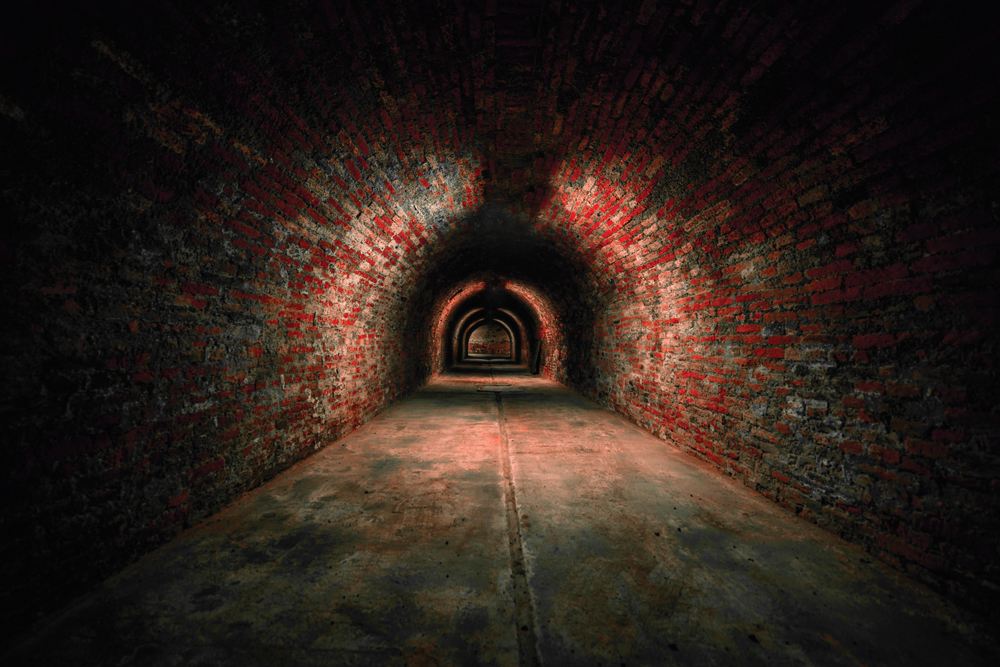
Anyone who has spent some time exploring or working Downtown has heard the stories about the existence of a series of interconnected tunnels under Flint connecting buildings and holding numerous secrets and treasures. The tunnels are said to contain everything from a rare and perfectly intact classic car to altars of witchcraft. Some speak of a great defense bunker hidden below while others claim there are hidden tunnels where GM bigwigs could move about the city unseen doing their business. Does Flint hold secrets buried deep underground?
The Truth
Tunnels do exist, but are used for utility. Service tunnels ran beneath the sidewalks concealing phone and water lines and areas for streetcar maintenance. Some businesses, such as Halo Burger and the GFAC building, had underground storage (Vernors reportedly stored casks to let them age). Many buildings had underground areas where coal was stored. Under the UM-Flint buildings, there is said to be an old civil defense shelter which does lend some truth to at least a part of the legend.
#6 The Sauk Tribe Massacre
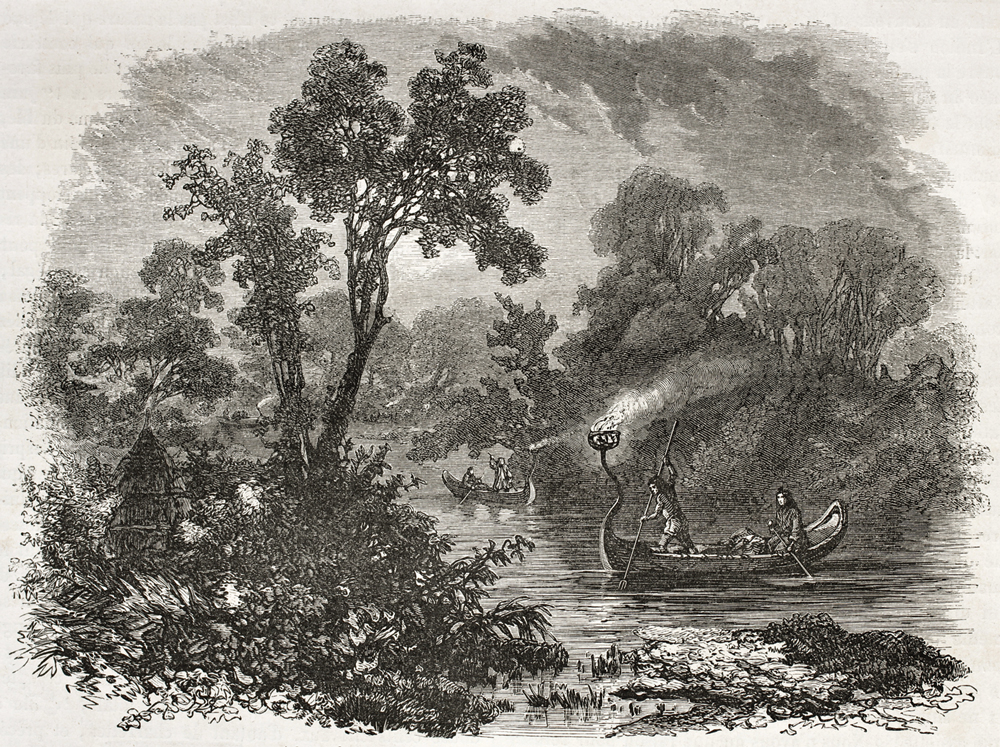
Before early pioneers set foot in Michigan, the land was ruled by Native Americans – namely, the Chippewa (Ojibwe), Ottawa and Sauk tribes. At the time, the Sauk inhabited our area, bordered by the Chippewa to the north and Ottawa to the south. As the legend goes, between the years 1638 and 1640, a fierce battle ensued in and around Genesee County. The Chippewa (with help from the allied Ottawa) attacked the Sauk in the dead of night. The Sauk engaged their rivals at a spot about a half mile south of the city and then again, a mile north of Flushing. Decimated by the sneak attack, the Sauk were forced to flee the area, settling on the shores of Lake Michigan in Wisconsin. After the Sauk retreat, the Chippewa moved in but soon left the area as they believed that the forests and grounds were haunted by ghosts of the slain Sauk warriors.
The Truth
The above account was provided in much more vivid detail by Ephraim S. Williams in The History of Genesee County, Michigan published by Everett and Abbotts in 1879. There is some belief that the entire account is fiction and that the Sauk were actually never in Michigan. It seems a French mapmaker mistook Lake Michigan for Lake Huron and identified Sauk lands on the wrong coast. But this seems unlikely, given that a documented “Sauk Trail” can be followed from Genesee County to the Lake Michigan border. Physical evidence in Genesee County exists to also support the legend. Arrowheads and other artifacts were found in Flushing in the area where the battle is perceived to have taken place, and in 2008, a cache of 30 native American skeletons was unearthed at Stone Street just south of Downtown Flint.
#7 The Healing Spring of Saginaw Street
In the 1870s, Flint was looking for adequate sources of water for manufacturing, fire protection and drinking purposes. Three artesian wells were dug. The first was located near Crapo’s Mill, but quickly abandoned. The second was dug at the corner of Garland and Fifth Streets, but the flow failed to reach the surface. The third, at the corner of Saginaw and First Streets, became a mineral spring of some renown. The spring was thought to have medicinal properties and its water was imbibed by pedestrians to the tune of over 2,000 persons a day. All claimed significant health benefits from drinking the water. Did this spring exist? And if so, is it still in operation?
The Truth
The Saginaw Street artesian well did exist and is prominent in historical photos of early Flint. The well has since been moved from its original location to Hamilton Park where it still stands at the corner of MLK Avenue and E. Fifth Avenue. We may never know about the well’s supposed healing properties as the water has never been studied and the well is no longer in operation.
#8 Just a Simple Game of Cards

In 1837, William M. Fenton and New Yorker, Robert LeRoy, traveled to the settlement of Dibbleville where they decided set up shop. The men were soon joined by friend, Benjamin Rockwell. As Fenton, LeRoy and Rockwell platted the area, they had to settle on an official name for their settlement. Legend has it that to determine the name, the men played a high-stakes poker game. Mr. Fenton held the winning hand and the settlement was dubbed Fentonville (shortened to Fenton in 1863). As a consolation prize, the town’s main street was renamed LeRoy Street. The men continued playing, with the winner of each hand naming a new street. Elizabeth Street was named for LeRoy’s wife, Adelaide Street for Fenton’s wife and Lavinia Street for Rockwell’s.
The Truth
The legend goes all the way back to the late 1800s when it was written by F. Ellis in The History of Genesee County, Michigan published by Everett and Abbotts. No evidence exists except the Ellis account. The legend of the card game is immortalized in a bronze sculpture called “The Game” created by artist Oleg Kedria, installed in 2017 on the grounds of the Fenton Community and Cultural Center.
#9 The Bandits of Long Lake

During the early pioneer days of Genesee County, Long Lake (now Lake Fenton) was known to the Chippewa Tribe as their “happy hunting grounds.” As the pioneers settled around the lake, the Chippewa welcomed them, as most pioneers were a hardworking and fair lot of men. But not all men are cut from the same cloth. Soon, a tightknit group of 80 white renegades found their way to the lake and began ravaging the countryside. Eventually, the group fought their way to Grand Rapids where they killed a trader and took his daughters hostage. The pioneers were too few in numbers to rid the area of the scoundrels, so the local natives took charge. The Chippewa met with their friends, the Ottawa, and devised a plan to catch the outlaws in an ever-tightening net. The outlaws were tracked by a mute native American boy named Segoguen and his dog to their hideout on Long Lake. There, the two tribes converged and none of the 80 bandits escaped.
The Truth
The account above is a story that has been passed down through generations of inhabitants of the area surrounding Lake Fenton. The location of the bandit’s hideout is believed to be the land now occupied by the Fenton Moose Lodge. Actual evidence of the story, however, is lacking. As of this writing, there is no physical proof of the legend.
#10 A Visit from Saint Nicholas

“’Twas the night before Christmas, when all through the house
Not a creature was stirring, not even a mouse;”
On December 24, 1822, prominent New York professor, Clement Clark Moore, sat himself down next to a beautiful marble fireplace bedecked with Christmas stockings and wrote the poem A Visit from St. Nicholas. Recognized throughout the world, the poem is read by millions of families to their children on Christmas Eve. And, for nearly 90 years, that special fireplace has hidden in plain sight … in Flint. Legend has it that in 1931, a local interior designer purchased the Italian marble fireplace façade from Moore’s New York home for the original residents of the house at 515 East Street – now home to Voices for Children. There it sits in operation, the focal point of annual Christmas celebrations.
The Truth
This story is confirmed. Clement Clark Moore’s original fireplace façade is located in Flint at the home of Voices for Children. In fact, many people have visited the house over the years to take pictures with the historical artifact.






